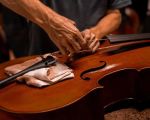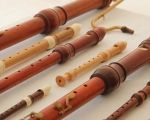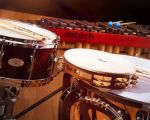- 1-Mechanism-of-Sound-Production-in-String-Instruments
- 2-How-Wind-Instruments-Produce-Sound
- 3-Sound-Production-in-Percussion-Instruments
- 4-Real-World-Examples-and-Musical-Impact
- 5-Explore-More-with-Beat-Trigger
1. Mechanism of Sound Production in String Instruments
Understanding how string instruments produce music involves appreciating the role of vibrating strings. When a string is plucked, bowed, or struck, it vibrates at specific frequencies, creating sound waves that travel through the air. The vibration’s frequency determines the pitch, while the string’s thickness, tension, and length influence the tone quality.
For example, in a violin, drawing the bow across the strings causes them to vibrate continuously, producing sustained notes. The body of the instrument acts as a resonator, amplifying these vibrations to create rich, full sounds. This principle is shared by many string instruments such as guitars, cellos, and harps, each with distinct construction elements that shape their unique timbres.
1.1 Role of Resonance in String Instruments
Resonance is crucial in enriching the sound produced. The hollow wooden body or soundboard resonates with the string vibrations, enhancing volume and tonal complexity. This is why two violins played with the same string pressure can sound very different depending on their build quality and materials.
1.2 Interaction Between Player and Instrument
The way a musician interacts with the instrument—plucking softly or aggressively, changing bow speed or pressure—greatly affects the sound output. This dynamic control is a big part of what makes string instruments so expressive and beloved.
2. How Wind Instruments Produce Sound
Wind instruments generate sound through the vibration of air columns inside tubes of varying shapes and lengths. When a player blows air into or across a mouthpiece, this airflow causes the air inside the instrument to vibrate. The length of the air column, which can be altered by opening or closing holes or valves, controls the pitch.
Instruments like flutes produce sound by splitting the air stream at the edge of the mouthpiece, while reed instruments such as clarinets or saxophones use a vibrating reed to initiate sound waves. Brass instruments, like trumpets and trombones, rely on the buzzing of the player’s lips against a cup-shaped mouthpiece to excite the air column.
2.1 Manipulating Pitch and Tone in Wind Instruments
Players change pitch by adjusting finger placements on keys or valves, which effectively shortens or lengthens the vibrating air column. Tone color is influenced by factors like embouchure (how the lips are shaped) and breath control, allowing for a wide variety of musical expressions.
2.2 Acoustic Principles Behind Wind Instruments
The fundamental physics involves standing waves and harmonics, where specific air vibration patterns inside the instrument produce different notes. This complexity is why skilled players can produce subtle nuances and a broad dynamic range.
3. Sound Production in Percussion Instruments
Percussion instruments produce music by striking, shaking, or scraping, causing the instrument’s surface or body to vibrate. The vibrations then create sound waves. Unlike string and wind instruments, many percussion instruments don’t produce definite pitches but instead offer rhythmic and tonal variety.
For example, drums produce sound when their stretched membranes are hit, causing the membrane and air inside the drum shell to vibrate. Instruments like xylophones produce pitched notes when their wooden bars are struck, with bar length and thickness determining pitch.
3.1 Diversity in Percussion Sound Production
Some percussion instruments, like timpani, can be tuned to specific pitches, while others serve primarily rhythmic purposes. The material of the striking implement (sticks, mallets, hands) also affects the quality and volume of the sound.
3.2 Percussion’s Role in Music
Percussion instruments add rhythm, texture, and dynamics to music, often driving the tempo or accentuating emotional peaks. Their ability to produce both pitched and unpitched sounds makes them versatile tools in any musical ensemble.
4. Real-World Examples and Musical Impact
Consider how a jazz quartet blends these instrument families. The string bass provides foundational tones through plucked strings, while the saxophone adds melodic lines with its reed-driven sound. Meanwhile, the drummer offers rhythm and drive through a variety of percussion instruments.
In classical music, orchestras showcase the complex interaction between string, wind, and percussion instruments. For instance, the powerful timpani roll underpins dramatic moments, while violins soar with expressive melodies, and flutes add bright, airy textures.
One famous story is of renowned cellist Yo-Yo Ma, who highlights how subtle changes in bowing technique transform the character of string music, demonstrating the deep connection between performer and instrument mechanics.
5. Explore More with Beat Trigger
For musicians and enthusiasts wanting to dive deeper into how different instruments produce music, Beat Trigger offers a comprehensive range of resources and products. Whether you’re searching for the perfect string instrument, wind instrument accessories, or percussion tools, Beat Trigger provides expert recommendations tailored to your needs.
Exploring our platform can help you understand the nuances of sound production and find the ideal instruments to elevate your musical journey.








